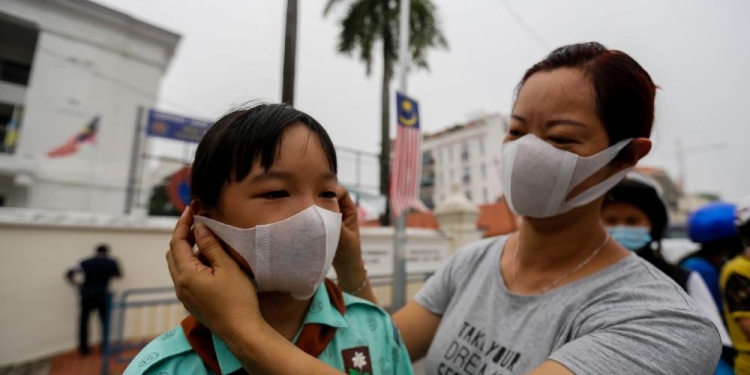The World Health Organisation (WHO) released a guidance on face masks for kids on the 21st of August. The page includes advice for different age groups, many are already returning to classrooms.
Here are the guidelines according to WHO and UNICEF. They also take children’s psychosocial needs and developmental milestones in consideration:
Ages 5 and younger
WHO advises that children aged 5 years and under should not be required to wear masks. This is based on the safety and overall interest of the child and the capacity to appropriately use a mask with minimal assistance.
However, there may be requirements for children aged 5 years and under to wear masks in certain countries. There might also be specific needs in some settings—like being physically close to someone who is ill. In these circumstances, if the child wears a mask, a parent or other guardian should be within direct line of sight to supervise the safe use of the mask.
Ages 6 – 11
Children at these ages should wear masks, but under certain conditions:
- Whether there is widespread transmission in the area where the child resides
- The ability of the child to safely and appropriately use a mask
- Access to masks, as well as laundering and replacement of masks in certain settings (such as schools and childcare services)
- Adequate adult supervision and instructions to the child on how to put on, take off and safely wear masks
- Potential impact of wearing a mask on learning and psychosocial development, in consultation with teachers, parents/caregivers and/or medical providers
- Specific settings and interactions the child has with other people who are at high risk of developing serious illness, such as the elderly and those with other underlying health conditions
Ages 12 and older
These kids should wear masks under the same conditions adults would wear them, using the standard social distancing guidelines, according to WHO. This is particularly for situations when they cannot guarantee at least a 1 meter distance from others and there is widespread transmission in the area—like in schools.
For kids with developmental disorders, disabilities or other specific health conditions, they should not be mandatory, or should be assessed on a case by case basis. Children who are in general good health can wear a non-medical or fabric mask, but children with underlying health conditions should wear a medical mask.
WHO’s findings stress that there is still limited evidence about how COVID-19 is transmitted in children. But according to them, older children may be more likely to spread the virus than younger ones.
Though there are no mortality rates for children in Malaysia when it comes to COVID-19, Datuk Dr Noor Hisham Abdullah said that it is still the responsibility of adults to ensure that the safety of the young ones is taken care of. The vulnerability of children and their developing immune systems makes them a high-risk group to contract the virus.
[ SOURCE, 2, IMAGE SOURCE ]








